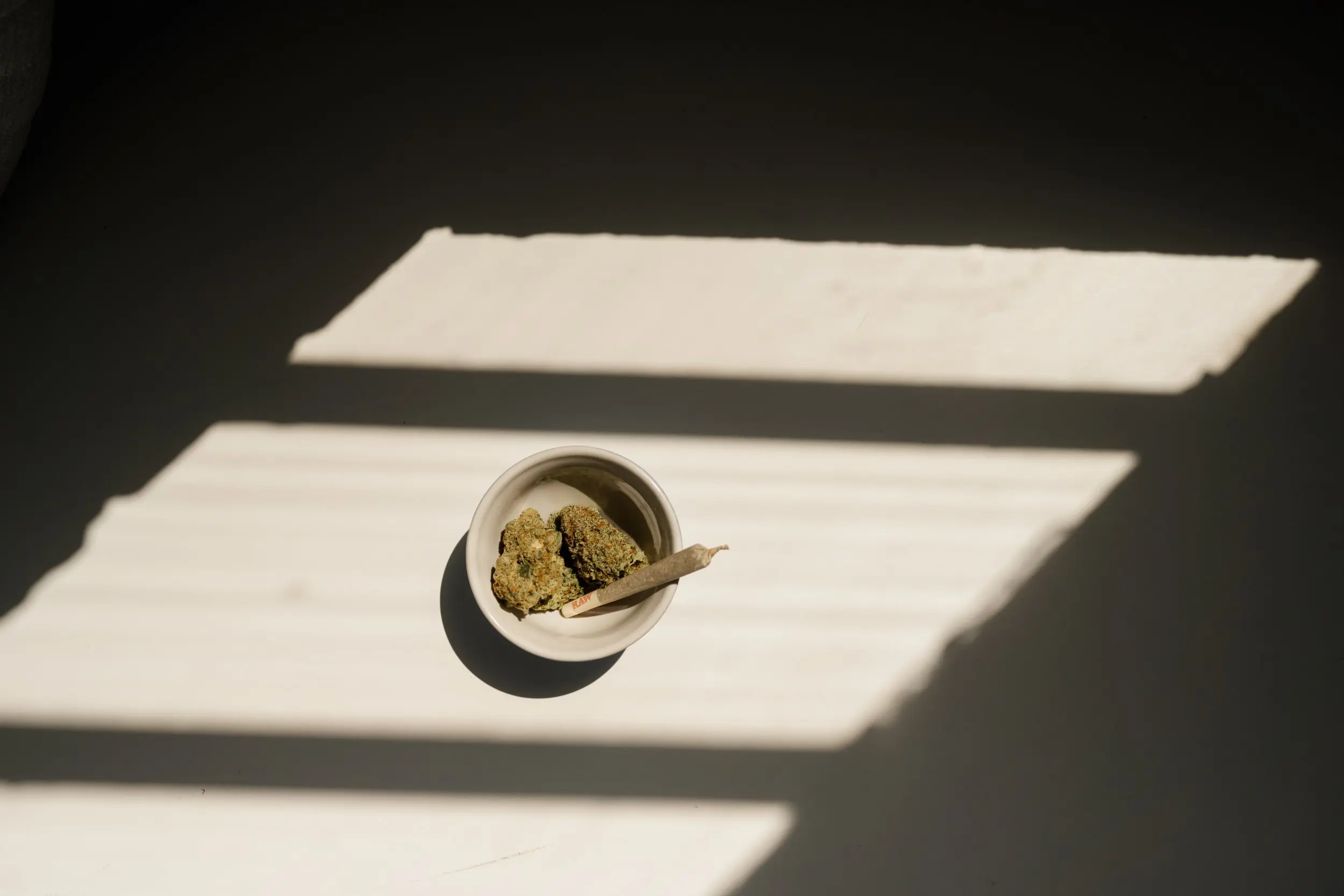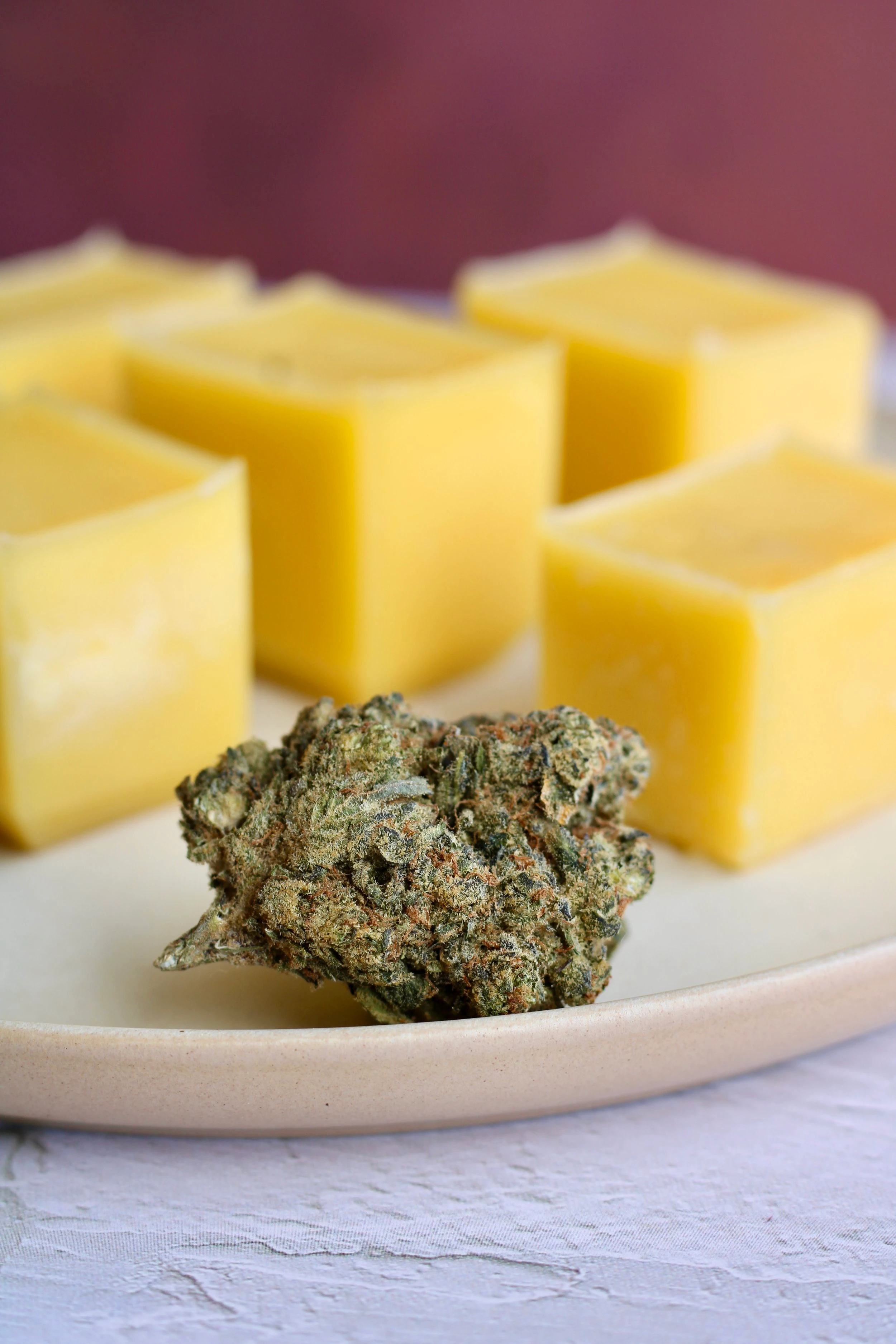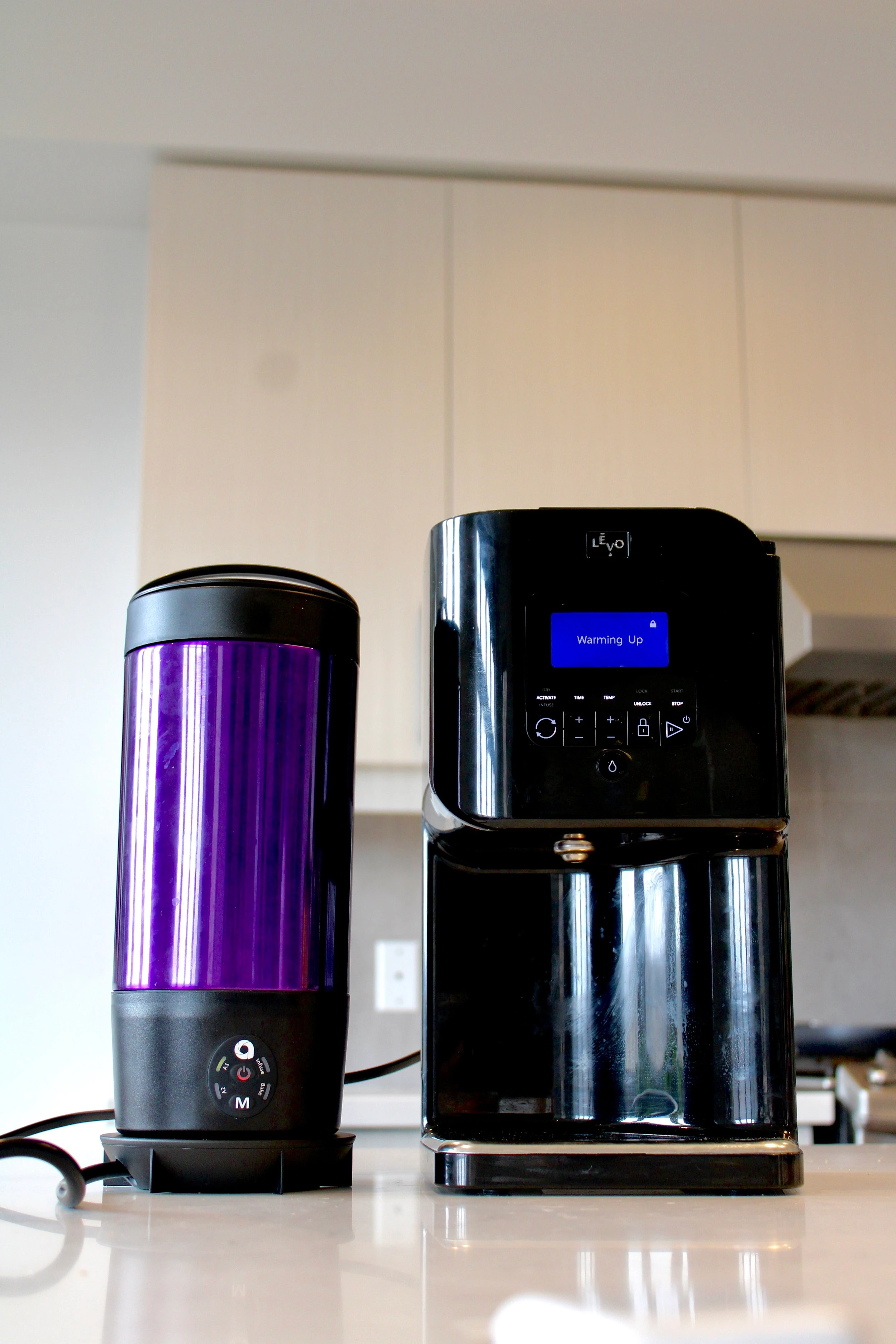
This blog post may contain affiliate links where I may earn commission from qualifying purchases. This blog post is not intended to promote cannabis use and is not medical, health or professional advice. All opinions expressed in this blog post are my personal views and are intended for educational and entertainment purposes only. Information provided in this blog posts including without limitation information regarding product attributes is provided as general information.
Cannabis contains psychoactive and therapeutic compounds called cannabidiol (CBD) and tetrahydrocannabinol (THC). The ratio of these chemicals depends on the plant breed where a particular substance has been extracted. It can be a Sativa, Indica, or hybrid leaf which would essentially determine the effects of the product. Aside from the source, there’s a decarboxylation process that converts tetrahydrocannabinol acid (THCA) and cannabidiolic acid (CBDA) from raw cannabis into THC and CBD to produce euphoric and therapeutic effects. Delving into this topic is crucial as you learn how cannabis products give satisfaction and relief to millions of people nowadays.
Once you know how decarboxylation works, you can closely examine each cannabis product that piques your interest. Whether you’re shopping in local weed dispensaries or online shops, you want the best product. However, not a large portion of the cannabis market is critical about the weed items they buy for recreational and medical use. Mind you, when using these supplements, you should be conscious of how they impact your mind and body. Read on for broader knowledge about decarboxylation since it’s essential for an informed cannabis selection and an ideal experience.
What is Decarboxylation Exactly?
Most cannabis products sold in the dispensaries have been decarboxylated. By definition, decarboxylation pertains to activating the psychoactive and therapeutic compounds in cannabis so that you feel high and get relief once it’s consumed. Whether a cannabutter, oil, tincture, or topicals, the THCA or CBDA in the weed source is converted into THC or CBD to activate its psychoactive or therapeutic effects. That’s the essence of decarboxylation- and yes, it’s crucial in the production of cannabis extracts you buy at the store or any edibles you prepare at home.
If you’re wondering about THCA and CBDA- they’re raw substances that can’t effectively bind with our endocannabinoid receptors. Hence, a chemical conversion to THC and CBD is required to achieve their desired purpose. This is generally undertaken using controlled heat, for example, the flame of a lighter, a torch with a dab rig, the atomizer in a vape pen, or an oven when making edibles. The heat removes that extra carboxyl ring in the chemical structure of THCA or CBDA also called decarboxylation.
Whatever delivery method or type of cannabis product you choose, decarboxylation is critical but not always necessary. You can opt to consume cannabis in its raw form, but the effects would be different. As commonly practiced, the buds are heated in an oven first to decarboxylate them and then infused into a medium such as oil or cannabutter. That infusion is necessary when making edibles, such as cookies, brownies, gummies, and more. When you consume weed edibles it does not involve lighting the product on fire and smoking it, like with a joint, however, the conversion still happens during cooking foods or beverages. This enables the activation of the THCA into THC or CBDA into CBD, thus making you feel high and experience some relief.

Photo by Anna Li, The Cannabinista
The Temperature Where Decarboxylation Occurs
There’s a specific temperature range where weed decarboxylation occurs, generally between 200-245ºF. If you make edibles, heating the herbs at 220ºF for at least 30 minutes is recommended to decarb the substance. Terpenes are volatile, so high temperatures should be avoided during decarboxylation as it would cause them to evaporate, leaving undesirable flavours and aromas behind. As a rule of thumb, don’t exceed 300ºF to ensure that the potency of cannabinoids and terpenes is preserved.
Standard Methods for Decarbing Cannabis
The importance of decarboxylation in making cannabis products ideally potent can never be understated. However, this chemical process is not executed just by a single method. There are a variety of ways that you can decarb cannabis- you will have to choose the best one for your desired effects. Whichever means you choose in the following options, the key to decarbing, when you cook edibles, is to maintain it low and slow.
Natural Decarboxylation Method
Even without human intervention, cannabis will decarboxylate itself over time. But this natural process usually takes a more extended timeframe and provides no quality control. So there’s essentially no valid reference for how much THCA or CBDA may be converted to THC or CBD. This method can be taken only if you have a long timeframe (perhaps a year or so); otherwise, it’s not preferable for getting quick results.
Decarboxylation Using Modern Decarb Devices
We’re already in the golden age of cannabis consumption, so it’s no surprise that modern tools are available to decarboxylate cannabis. If you use a specific machine for this purpose, you’re guaranteed to consume less energy than an oven. This technology also comes with sensors that turn off the heat once the cannabis has reached its ideal temperature. Such a device would be a great investment if you intend to decarb cannabis regularly for personal or commercial use.
Decarboxylation Using Baking Sheet
The simplest and most common way of decarbing cannabis is to bake the material in an oven. You need to place the baking sheet-covered pan on the middle level of the device. But make sure that you grind up the flower and spread it over a parchment-lined baking sheet. Setting the oven to 220-240ºF as you bake the weed for 30-40 minutes should also be observed. You will gradually notice that the cannabis is changing its colour to a more golden hue. Don’t let the material overheat and get too dark, which can cause the product to lose potency.
This method tends to expose more odour into your kitchen. To reduce the odour, utilize your kitchen hood fan, open the windows, turn on an air purifier, and light some candles.
Decarboxylation Using Mason Jar
This method allows you to control odours as well. Using a mason jar to decarboxylate cannabis can be done in these simple steps:
- Set the oven between 220-240ºF
- Place the oven rack in the middle position
- Put the ground cannabis flower in the mason jar
- Lightly screw on the lid without making it too tight
- Bake the material for 30 minutes. If you see uneven decarb, shake the mason jar (while wearing oven mitts) and decarb for another 10-20 minutes. I find that the sweet spot is anywhere between 35-45 minutes (oven strength may vary). You want the cannabis flower to be a roasted brown, but not burnt, otherwise you would have burned off a lot of the cannabinoid content.
- Remove the jar from the oven and shake it to disperse the cannabis
- Once you’re done with all that, let it cool for at least 20 minutes
What’s the Best Method for Decarbing Cannabis?
There are other methods that you can utilize to decarb your cannabis, aside from those previously mentioned. But your choice should come down to the product you want to make. If you produce THC or CBD isolates, you would decarboxylate the substance before extraction, as this can improve the speed and efficiency of the extraction process. For weed butter, oils, or broad-spectrum distillates, decarbing after extraction is recommended as it can help preserve cannabinoids and terpenes.
My Preferred Method

Photography by Anna Li - the Cannabinista
My preferred method for decarbing cannabis is through the use of decarb machines, with the LEVO oil infuser being my favourite choice. The primary reasons for my preference are fourfold.
- Decarb machines like the LEVO are incredibly easy to clean, eliminating the hassle of residue buildup.
- They produce the least amount of odor compared to other methods, allowing for discreet and odour-free cannabis processing.
- These machines offer a "set it and forget it" convenience, meaning I can start the decarbing process and leave the home without worrying about potential burning or constant monitoring.
- Their user-friendly design simplifies the entire decarboxylation process, making it accessible even for beginners.
In summary, the LEVO oil infuser, as my chosen decarb machine, combines convenience, cleanliness, and effectiveness, making it my go-to method for preparing cannabis.
Use my link for 10% off the LEVO oil infusion machine.
Why is THCA or CBDA Not Psychoactive?
THCA or CBDA is a raw chemical substance found in cannabis imbued with its therapeutic effects. However, this compound is too large and does not bind to the g-protein receptors in our cells that help achieve homeostasis (or balance) within our biological systems. Decarboxylation is needed to convert the substance into THC or CBD, which can bind to the cannabinoid receptors and produce psychoactive or therapeutic effects.
Interestingly, tetrahydrocannabinol or cannabidiol is similar to anandamide, a natural cannabinoid. This substance is also a cannabinoid receptor agonist, activating the receptors like anandamide. Once the cannabinoids are introduced into our body, it allows us to hijack our endocannabinoid messaging system and make adjustments. As a result, we enjoy health benefits, such as better quality of life and relief from certain conditions, including anxiety, depression, stress, and so much more.
Advantages of Decarbing Cannabis
Decarboxylation is widely known for maximizing the power of cannabinoids such as THC and CBD. This chemical process activates the compounds to make them more potent. Perhaps you now realize its importance for ideal weed consumption. If you’re still a bit puzzled, here are the significant advantages of why it should be undertaken to achieve an optimum experience:
Cannabinoid Activation
Undecarbed cannabis may offer some potential health benefits still. It activates the THC and CBD to produce desired results, which is why weed products are used for recreational and medical purposes. But to have a psychoactive experience with cannabis, you should necessarily decarb the substance. Just bear in mind that decarboxylation happens differently in every cannabis form. For example, preparing cannabis edibles usually requires a more comprehensive approach for the end product to be effective.
Prevents Pathogens
Aside from activating cannabinoids, decarboxylation also offers protective effects. This chemical process prevents pathogens that may be present in cannabis. But once they are decarboxylated, the moisture is removed from the cannabis, which minimizes the chance of microbial pathogens spoiling your weed product.
To Decarb or Not to Decarb? That’s the Question!
Decarboxylation is very important for safe and effective cannabis consumption. But that doesn’t necessarily mean that this chemical process is always required. After all, you can consume cannabis in its raw form and still enjoy some therapeutic effects, as research suggests. More recently, some studies revealed the potential health benefits of cannabis even without being decarboxylated.
As experts say, THCA and CBDA can be consumed if you seek non-psychotropic effects from cannabis. That’s their main selling point. You won’t get high when you consume those raw compounds since they don’t pass through the blood-brain barrier and attach to cannabinoid receptors in the brain. Current trends show that more manufacturers and consumers are turning to such natural isolates for good reasons. But again, THC and CBD also have apparent advantages that must be considered if you are weighing these two options.

Hey I’m Anna, also known as Cannabinista™
I’m a cannabis content creator, recipe developer, and enthusiast for the ancient plant. I’ve dedicated my platforms to helping you create a healthy relationship with cannabis through mindful consumption and providing education that resonates with the modern consumer.
My ultimate goal is to debunk traditional stoner stereotypes and myths, by showcasing the world of cannabis through my POV.

